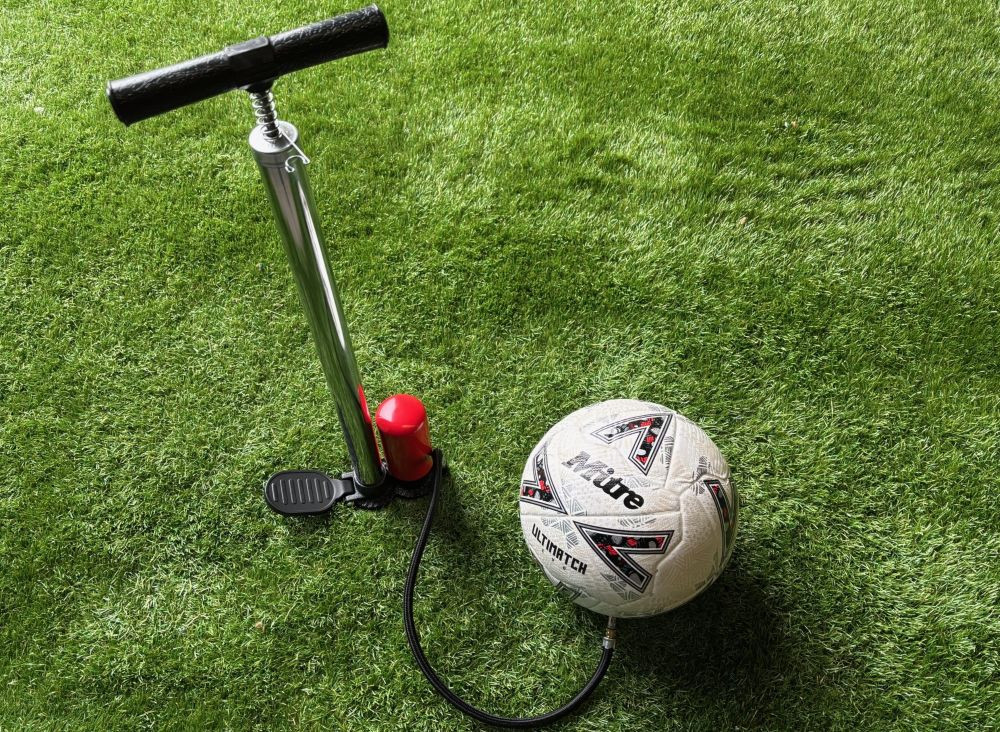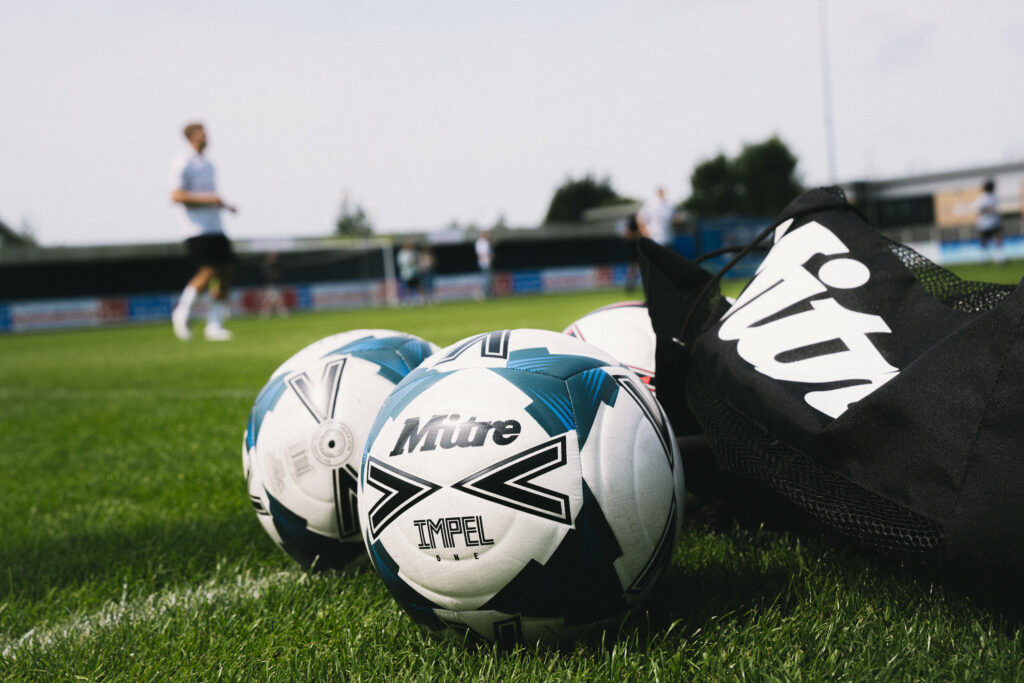Are you unsure what PSI your football should be? This guide clarifies the proper football pressure for optimal play, offers tips for maintenance, and highlights why CAUHOI2025.UK.COM is your go-to resource for sports equipment expertise.
Table of Contents
- Understanding PSI for Footballs
- FIFA Regulations on Football Pressure
- Why Proper Inflation Matters
- Step-by-Step: How to Inflate a Football Correctly
- Checking Football Air Pressure: Methods & Tools
- Deflating a Football: A Quick Guide
- Football Maintenance Tips
- FAQs: Common Questions About Football PSI
- CAUHOI2025.UK.COM: Your Trusted Source
1. Understanding PSI for Footballs
PSI, or pounds per square inch, is the unit of measurement for air pressure in a football. Getting the PSI right is crucial for performance, safety, and the longevity of the ball. Too much or too little air can negatively impact how the ball performs and feels during play. This guide gives all the details.
2. FIFA Regulations on Football Pressure
FIFA, the international governing body for football, sets guidelines for the acceptable pressure range in footballs used in official matches.
Acceptable Pressure Range
- Standard Range: According to FIFA regulations, a standard football should have a pressure between 8.5 PSI and 15.6 PSI when measured at sea level.
League and Association Guidelines
- Variations: While FIFA provides a general range, specific leagues and associations may have their own regulations. For example, the MLS (Major League Soccer) often stipulates that match balls should be inflated to around 13 PSI.
3. Why Proper Inflation Matters
Maintaining the correct air pressure in your football is essential for several reasons:
Performance
- Control: A properly inflated ball is easier to control, allowing players to pass, dribble, and shoot with greater accuracy.
- Trajectory: The right pressure ensures a predictable flight path, which is vital for consistent performance.
Safety
- Injury Prevention: An underinflated or overinflated ball can increase the risk of injury. Proper inflation helps to minimize this risk.
Longevity
- Durability: Correctly inflated footballs are less likely to become damaged, extending their lifespan.
- Consistent Shape: Proper pressure helps the ball maintain its shape, even with regular use.
4. Step-by-Step: How to Inflate a Football Correctly
Inflating a football is a straightforward process, but attention to detail is key.
Tools You’ll Need
- Football Pump: A reliable pump, either hand-operated or electric.
- Inflation Needle: A standard needle that fits the pump.
- Pressure Gauge: Optional, but highly recommended for accurate inflation.
Step-by-Step Guide
- Moisten the Needle:
- Before inserting the needle, moisten it with water or saliva. This helps it slide in smoothly and prevents damage to the ball’s valve.
- Insert the Needle Carefully:
- Gently insert the needle straight into the valve at a 90-degree angle. Avoid angling the needle, as this can damage the bladder inside the ball.
- Begin Pumping:
- If using a hand pump, use steady, even strokes. If using an electric pump, turn it on and monitor the pressure.
- Monitor the Pressure:
- Use a pressure gauge to ensure you reach the correct PSI. Refer to FIFA regulations or your league’s specific guidelines.
- Remove the Needle:
- Once the desired pressure is reached, carefully remove the needle. The valve should automatically seal, preventing air from escaping.
Choosing the Right Pump
- Hand Pump: Suitable for occasional inflation, but can be tiring for multiple balls.
- Stirrup Pump: Offers more efficient inflation with less effort.
- Electric Pump: Best for inflating multiple balls quickly, often includes a built-in pressure gauge.
 Ball Pump
Ball Pump
5. Checking Football Air Pressure: Methods & Tools
Ensuring your football is properly inflated requires accurate measurement. Here are a few methods to consider:
Method 1: Air Pressure Gauge
- Accuracy: This is the most accurate method.
- How to Use: Insert the gauge’s needle into the ball’s valve and read the measurement. Digital gauges provide precise readings, while analog gauges are reliable and easy to use.
Method 2: The Bounce Test
- Simplicity: This is a quick, free method for a rough estimate.
- How to Perform: Drop the ball from a height of 80 inches (approximately the height of an adult’s shoulder). If properly inflated, it should bounce back to a height between 45 and 64 inches.
Method 3: The Squeeze Test
- Experience-Based: This method relies on feel and experience.
- How to Perform: Squeeze the ball to assess its firmness. With practice, you can gauge whether the pressure is within the correct range.
Tools for Checking Pressure
| Tool | Accuracy | Ease of Use | Cost |
|---|---|---|---|
| Digital Gauge | High | High | Moderate |
| Analog Gauge | Medium | High | Low |
| Bounce Test | Low | High | Free |
| Squeeze Test | Low | Medium | Free |
6. Deflating a Football: A Quick Guide
Deflating a football can be necessary for storage or travel. Here’s how to do it safely:
Step-by-Step Guide
- Insert the Needle:
- Insert an inflation needle into the ball’s valve. This opens the valve and allows air to escape.
- Squeeze the Ball:
- Gently squeeze the ball to push the air out. Be careful not to apply excessive force, which can damage the ball.
- Store Properly:
- Once deflated, store the ball in a cool, dry place. Avoid storing it in direct sunlight or extreme temperatures.
7. Football Maintenance Tips
Proper maintenance can significantly extend the life of your football.
Playing Surface
- Avoid Rough Surfaces: Do not use footballs on concrete or abrasive surfaces.
- Rebounder Nets: Use rebounder nets for solo practice to avoid hitting the ball against walls.
Storage
- Clean Before Storing: Wipe off any dirt or mud before storing.
- Ventilated Area: Store the ball in a ventilated area, away from direct sunlight and extreme temperatures.
- Mesh Bags: Use a mesh ball carry sack to allow air circulation.
General Care
- Avoid Sitting/Standing: Never sit or stand on the ball, as this can cause permanent deformation.
- Regular Checks: Regularly check the air pressure to ensure it remains within the recommended range.
 Mitre Impel Footballs
Mitre Impel Footballs
8. FAQs: Common Questions About Football PSI
Q1: What happens if a football is overinflated?
An overinflated football becomes hard and difficult to control. It can also lead to unpredictable bounces and increase the risk of injury.
Q2: What happens if a football is underinflated?
An underinflated football is soft and sluggish, making it difficult to kick and pass accurately. It can also become deformed over time.
Q3: Can temperature affect football pressure?
Yes, temperature can affect air pressure. In colder temperatures, the pressure may decrease, while in warmer temperatures, it may increase. Always check the pressure before playing, especially in extreme weather conditions. According to a study by the National Institute of Standards and Technology (NIST), air pressure in a ball can fluctuate significantly with temperature changes.
Q4: How often should I check the pressure in my football?
It is recommended to check the pressure before each game or training session to ensure optimal performance and safety.
Q5: Is there a universal PSI for all football sizes?
While the FIFA-recommended range of 8.5 to 15.6 PSI applies to sizes 3, 4, and 5, always check the specific guidelines for your league or association.
Q6: What type of pump is best for inflating footballs?
An electric pump with a built-in pressure gauge is the most convenient and accurate option, especially if you need to inflate multiple balls regularly.
Q7: How can I prevent damage to the ball’s valve during inflation?
Always moisten the needle before inserting it into the valve and insert it straight to avoid bending or damaging the internal components.
Q8: Can I use a bicycle pump to inflate a football?
Yes, you can use a bicycle pump if it has the correct needle attachment. However, it may not be as efficient as a dedicated football pump.
Q9: Where can I find reliable information about football regulations?
Refer to the official FIFA website or the website of your specific league or association for the most up-to-date regulations.
Q10: What should I do if my football is losing air quickly?
Check the valve for leaks. If the valve is damaged, you may need to replace the bladder inside the ball or purchase a new football.
9. CAUHOI2025.UK.COM: Your Trusted Source
At CAUHOI2025.UK.COM, we understand the importance of having accurate and reliable information at your fingertips. Whether you’re a seasoned athlete, a coach, or a parent, our platform is designed to provide you with the knowledge and resources you need to excel in the world of sports. We’re dedicated to offering clear, concise answers to your questions, backed by research and expertise.
Why Choose CAUHOI2025.UK.COM?
- Reliable Information: We provide well-researched answers from trusted sources.
- Easy to Understand: We simplify complex topics into easy-to-digest information.
- Comprehensive Coverage: From equipment guidelines to training tips, we cover a wide range of sports-related topics.
Need More Answers?
Do you have more questions about footballs or other sports equipment? Visit CAUHOI2025.UK.COM today to explore our extensive library of articles and resources. If you need personalized advice or have specific concerns, don’t hesitate to reach out to our team of experts.
Contact Us:
- Address: Equitable Life Building, 120 Broadway, New York, NY 10004, USA
- Phone: +1 (800) 555-0199
- Website: CAUHOI2025.UK.COM
Take Action Today
Ensure your football is always game-ready. Explore CauHoi2025.UK.COM for more tips, guides, and expert advice. Get the right PSI every time and elevate your game!

